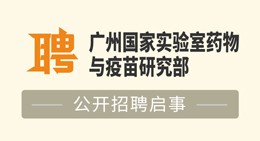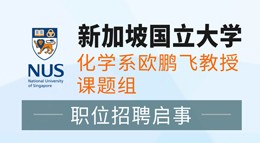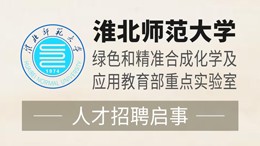当前位置:
X-MOL 学术
›
Pediatr. Blood Cancer
›
论文详情
Our official English website, www.x-mol.net, welcomes your feedback! (Note: you will need to create a separate account there.)
Interstitial brachytherapy for pediatric soft tissue sarcoma: Evolving practice over three decades and long-term outcomes.
Pediatric Blood & Cancer ( IF 2.4 ) Pub Date : 2018-05-11 , DOI: 10.1002/pbc.27112 Siddhartha Laskar 1 , Avinash Pilar 1 , Nehal Khanna 1 , Ajay Puri 2 , Ashish Gulia 2 , Sajid Qureshi 3 , Girish Chinnaswamy 4 , Tushar Vora 4 , Mukta Ramadwar 5
Pediatric Blood & Cancer ( IF 2.4 ) Pub Date : 2018-05-11 , DOI: 10.1002/pbc.27112 Siddhartha Laskar 1 , Avinash Pilar 1 , Nehal Khanna 1 , Ajay Puri 2 , Ashish Gulia 2 , Sajid Qureshi 3 , Girish Chinnaswamy 4 , Tushar Vora 4 , Mukta Ramadwar 5
Affiliation
PURPOSE
Evaluate long-term clinical outcomes, adverse effects, and evolving practice of interstitial brachytherapy (BT) for pediatric soft tissue sarcomas (STS).
METHODS
From September 1984 to December 2014, 105 children (median age 10 years) were included. There were 60 males and 45 females. The majority (74%) had primary lesions. Synovial sarcoma (22%) was the most frequent histology. Treatment included wide local excision and BT with or without external beam radiotherapy (EBRT). Eighty-five (81%) received BT alone.
RESULTS
After a median follow-up of 65 months, local control (LC), disease-free survival (DFS), and overall survival (OS) at 10 years were 83, 66, and 73%, respectively. On univariate analysis, LC was superior with tumors <5 cm versus >5 cm (93% vs. 75%, P = 0.10), Grade I/II versus Grade III tumors (97% vs. 73%, P = 0.01), nonround cell versus round cell histology (89% vs. 72%, P = 0.03), and trunk/extremity versus head and neck/genitourinary sites (87% vs. 57%, P = 0.0001). On multivariate analysis tumor size (P = 0.03) and location (P = 0.002) retained significance. Children receiving BT alone had comparable LC to those receiving BT and EBRT (84% vs. 80%, P = 0.43). There was no difference in LC between LDR versus HDR BT (86% vs. 83%, P = 0.30). Wound complications were seen in 6%. Subcutaneous fibrosis (25%), limb edema (6%), skeletal abnormalities (3%), and neuropathy (1%) were the late complications. One child (0.9%) developed a second malignancy after 7 years.
CONCLUSION
Interstitial BT with or without EBRT results in excellent outcomes. Radical BT alone, when used judiciously, results in excellent local control and function with minimal treatment-related morbidity.
中文翻译:

小儿软组织肉瘤的间质近距离放射治疗:三十年来不断发展的实践和长期成果。
目的评估小儿软组织肉瘤(STS)的间质近距离放射治疗(BT)的长期临床疗效,不良反应和不断发展的实践。方法1984年9月至2014年12月,纳入105名儿童(中位年龄10岁)。男60例,女45例。大多数(74%)患有原发灶。滑膜肉瘤(22%)是最常见的组织学。治疗包括广泛的局部切除术和BT(有或没有外部束放射疗法(EBRT))。八十五(81%)人单独接受了BT。结果中位随访65个月后,在10年时的局部控制(LC),无病生存(DFS)和总体生存(OS)分别为83%,66%和73%。在单因素分析中,LC优于<5 cm和> 5 cm的肿瘤(93%vs. 75%,P = 0.10),I / II和III级肿瘤(97%vs. 73%,P = 0.01),非圆形细胞与圆形细胞的组织学比较(89%vs. 72%,P = 0.03),躯干/四肢与头颈部/泌尿生殖系统的位置比较(87%vs. 57%,P = 0.0001)。在多变量分析中,肿瘤大小(P = 0.03)和位置(P = 0.002)保持显着性。单独接受BT的儿童的LC与接受BT和EBRT的儿童相当(84%比80%,P = 0.43)。LDR与HDR BT之间的LC无差异(86%对83%,P = 0.30)。伤口并发症发生率为6%。晚期并发症为皮下纤维化(25%),肢体水肿(6%),骨骼异常(3%)和神经病变(1%)。一个孩子(0.9%)在7年后出现第二次恶性肿瘤。结论伴或不伴EBRT的间质性BT均能获得优异的疗效。单独使用自由基BT,明智地使用时,
更新日期:2019-11-01
中文翻译:

小儿软组织肉瘤的间质近距离放射治疗:三十年来不断发展的实践和长期成果。
目的评估小儿软组织肉瘤(STS)的间质近距离放射治疗(BT)的长期临床疗效,不良反应和不断发展的实践。方法1984年9月至2014年12月,纳入105名儿童(中位年龄10岁)。男60例,女45例。大多数(74%)患有原发灶。滑膜肉瘤(22%)是最常见的组织学。治疗包括广泛的局部切除术和BT(有或没有外部束放射疗法(EBRT))。八十五(81%)人单独接受了BT。结果中位随访65个月后,在10年时的局部控制(LC),无病生存(DFS)和总体生存(OS)分别为83%,66%和73%。在单因素分析中,LC优于<5 cm和> 5 cm的肿瘤(93%vs. 75%,P = 0.10),I / II和III级肿瘤(97%vs. 73%,P = 0.01),非圆形细胞与圆形细胞的组织学比较(89%vs. 72%,P = 0.03),躯干/四肢与头颈部/泌尿生殖系统的位置比较(87%vs. 57%,P = 0.0001)。在多变量分析中,肿瘤大小(P = 0.03)和位置(P = 0.002)保持显着性。单独接受BT的儿童的LC与接受BT和EBRT的儿童相当(84%比80%,P = 0.43)。LDR与HDR BT之间的LC无差异(86%对83%,P = 0.30)。伤口并发症发生率为6%。晚期并发症为皮下纤维化(25%),肢体水肿(6%),骨骼异常(3%)和神经病变(1%)。一个孩子(0.9%)在7年后出现第二次恶性肿瘤。结论伴或不伴EBRT的间质性BT均能获得优异的疗效。单独使用自由基BT,明智地使用时,






































 京公网安备 11010802027423号
京公网安备 11010802027423号